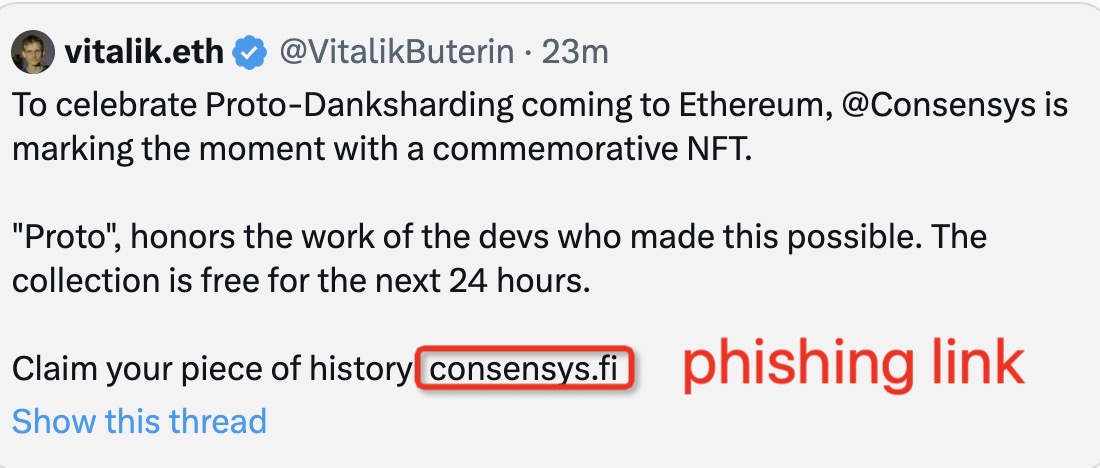The question “How to secure your crypto wallet?” is soaring due to the surge of crypto assets in the mainstream. Navigating the modern financial landscape, we find comfort in knowing that our traditional bank deposits of up to $250,000 are insured by the FDIC. But when it comes to cryptocurrencies, the security blankets we’re so used to seem non-existent. Even big names in crypto, like Coinbase and Binance, can only offer a degree of insurance, covering just a slice of our total investments.
The 2022 breach of Crypto.com, a notable cryptocurrency exchange endorsed by Matt Damon, saw hackers disappearing with $15 million in cryptocurrency. This raises serious questions about the safety of crypto exchanges and wallets, leaving many wondering—should we continue trading in crypto?

The report of security hacks in the crypto space will leave you in shock. So, let’s delve a little deeper. What exactly is a cryptocurrency wallet, and more importantly, how can you secure your crypto wallets against potential breaches? Let’s explore together how to secure your crypto wallet effectively.
What is a Crypto Wallet Exactly?
So, what is at the core of managing your digital assets securely? It’s undeniably the “cryptocurrency wallet,” also identified as a digital wallet. This concept isn’t just a service or an app, but it can also manifest as a tangible item, like a USB stick, playing a crucial role in shielding your public and private keys. These keys are intricate strings of alphanumeric characters, crucial for the encryption and decryption of your crypto transactions, enabling you to maneuver your assets securely.
In the realm of decentralized finance, cryptocurrency wallets lack the issuance or insurance by any central entities such as governments, central banks, or insurance firms. You can liken a public key to a bank account’s username, and the private key to a password or a PIN code. It is paramount to secure your crypto wallet, particularly the private keys; a lapse in doing so can render your wallet vacuous in seconds.
But, with the surge in malicious attacks on such wallets and exchanges, the query “how to secure your crypto wallet” is ever more pressing. It propels the necessity for individuals in the crypto ecosystem to adopt stringent and proactive security measures, ensuring the unassailable safety of their digital treasures.
How to Secure Your Crypto Wallet?
Let’s jump into the discussion on how to secure your crypto wallet:
1. Opt for Cold Wallets
Keep your digital assets in cold wallets—offline storage mediums like USB devices, that are virtually impervious to online hacking attempts. This is contrasted with hot wallets, which, while convenient, are perpetually exposed to online threats. A prime example of a secure cold wallet is Ledger, known for its layered security protocols.
2. Enable Two-Factor Authentication
Introduce a second layer of defense using two-factor authentication (2FA). This dual verification method ensures that even if hackers penetrate one layer, there’s another one guarding your assets. But remember, guard your 2FA codes zealously and never disclose them.
3. Safeguard Your Seed Phrase
Treat your seed phrase like a treasure map. It’s the string of words generated by your wallet service that grants access to your assets. Write it down, lock it up, and never lose it—there’s no “Forgot Password” in the world of crypto!
4. Fortify Your Passwords
You must have heard the phrase “Not your keys not your coins”. So, eradicate the use of weak passwords, the Achilles heel of security. Use a concoction of letters, numbers, and symbols to create a strong, unique password for each wallet. The stronger the password, the higher the wall around your digital castle.
5. Diversify Your Wallets
Don’t stack all your digital coins in one wallet. Distribute your assets between hot wallets for daily transactions and cold wallets for secure, long-term storage. Think of it as having a wallet for spending money and a bank vault for savings.
6. Be Wary of Social Media Scams
Stay sharp and skeptical about lucrative offers on social media platforms. Scammers masquerade as legitimate entities, luring unsuspecting users into their traps. Remember, if something sounds too good to be true, it usually is a scam. In a recent event, the X account of Vitalik Butterin was hacked which led to You can see an example social media scam link in the image below:

7. Shield Against Phishing Attempts
Arm yourself against phishing attacks by verifying the authenticity of emails and websites. Double-check URLs and never enter your credentials into dubious sites. Secure connections are your friends—look for HTTPS. Please check the below phishing attempt made by a Twitter account:

8. Prioritize Secure Internet Connections
Eschew public Wi-Fi when accessing your crypto wallets. The security vulnerabilities in public networks are a goldmine for hackers. A trustworthy VPN can be your shield in such scenarios.
Conclusion
Securing your crypto wallet is indispensable knowledge in the current digital era. The evolving landscape of cryptocurrencies demands adaptability and vigilance in securing digital assets. Knowing how to secure your crypto wallet equips you with unbreakable armor in the digital battleground. It also enables you to traverse the crypto world with confidence and peace of mind.
We have discussed every aspect of how to secure your crypto wallet. You must take these steps otherwise, you will eventually lose your assets to these bad actors.



